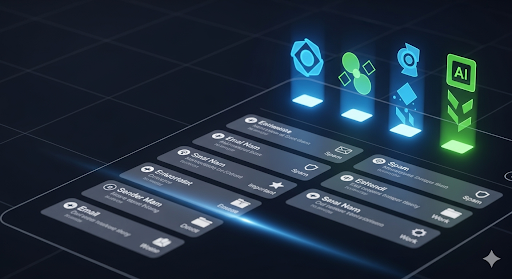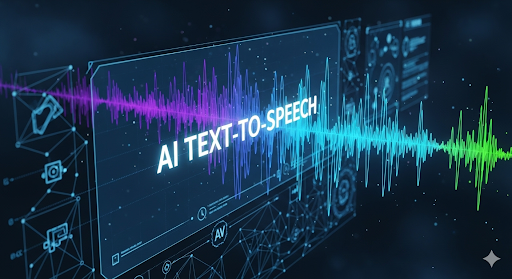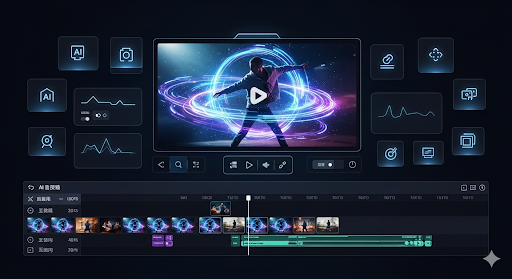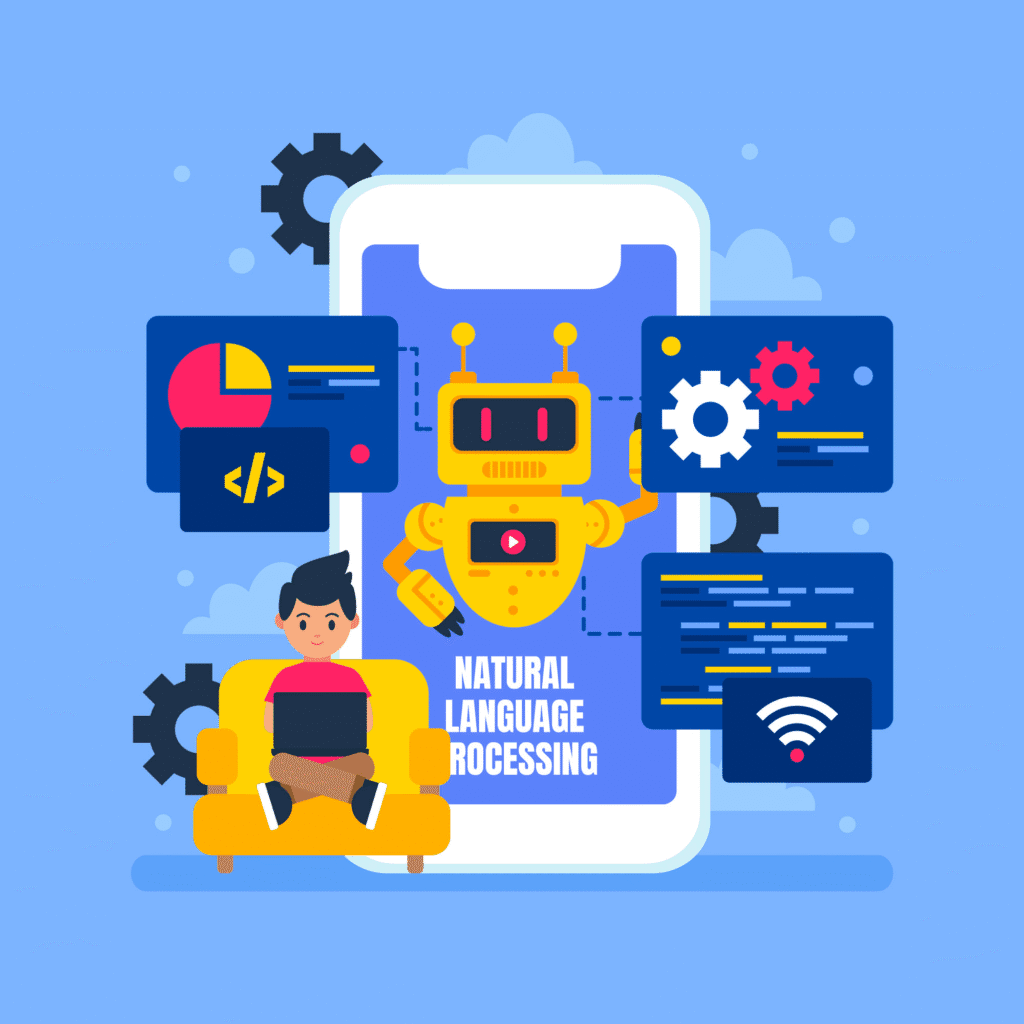
Understanding the AI Web App Landscape
Exploring the Benefits of AI Integration
Integrating AI offers significant advantages for web applications in 2024. Enhanced user experiences are readily achievable through personalized recommendations, smart search functionalities, and intuitive chatbots. Consider Spotify’s use of AI to curate personalized playlists—a prime example of how AI improves user engagement and satisfaction. This leads to increased user retention and ultimately, greater business success.
Furthermore, AI streamlines development processes. Automation of repetitive tasks, such as data entry and code generation, frees up developers to focus on more complex and creative aspects of the project. Tools like GitHub Copilot demonstrate the real-world impact of AI-assisted coding, boosting productivity and reducing development time. “By leveraging AI, businesses can significantly reduce development costs while delivering higher-quality web applications faster than ever before.” This efficiency translates directly into a competitive edge in the market.
Identifying the Right AI Tools and Platforms
Choosing the right AI tools and platforms is crucial for successful web app development. Consider your project’s specific needs. Do you require natural language processing (NLP) for chatbots? Perhaps computer vision for image analysis? The available options are vast, ranging from comprehensive platforms like Google AI Platform and Amazon SageMaker, offering pre-trained models and scalable infrastructure, to more specialized APIs like those provided by OpenAI (for GPT models) or Clarifai (for image recognition). Carefully evaluate each option based on cost, ease of integration, and the level of customization you need. “Selecting the wrong tools can lead to significant delays and increased development costs.”
Remember to factor in factors like your team’s expertise and the long-term maintenance of your application. Some platforms provide extensive documentation and community support. Others might require specialized skills. Consider the scalability of the chosen platform. Will it handle increased user traffic and data volume as your application grows? Before committing to a specific AI platform, thoroughly research reviews and testimonials. “Prioritizing ease of integration and scalability will streamline your development process and ensure the long-term success of your AI-powered web application.” Don’t hesitate to experiment with free tiers or trials to test different solutions before making a final decision.
Choosing Between Custom Development and Pre-built Solutions
The decision between custom development and pre-built solutions for your AI web app hinges on several factors. For complex, unique AI functionalities or high levels of integration with existing systems, custom development is often necessary. Companies like Google and Amazon offer robust cloud services, but tailoring them to niche needs requires significant coding expertise and potentially substantial financial investment. Consider the long-term scalability and maintainability of your solution. “A custom-built app allows for greater control and future adaptability, but comes with a higher upfront cost and longer development timeline.”
Conversely, leveraging pre-built AI solutions offers speed and cost-effectiveness. Many platforms offer pre-trained models and APIs for common tasks like image recognition or natural language processing, reducing development time and expenses significantly. However, this approach might limit customization options and could be less efficient if the pre-built solution doesn’t perfectly match your specific requirements. Popular choices include platforms offering pre-trained models for tasks like sentiment analysis or chatbot development. Carefully evaluate the limitations of pre-built options before committing. “Selecting the right approach depends heavily on your budget, technical expertise, and the complexity of your AI application’s intended functionality.”
Planning Your AI-Powered Web Application
Defining Your App’s Core Functionality and Target Audience
Before diving into code, meticulously define your application’s core purpose. What problem will your AI-powered web app solve? Will it automate tasks, provide personalized recommendations, or offer insightful data analysis? Clearly articulating this central functionality is crucial for guiding development and ensuring a focused product. Consider successful examples like Grammarly (AI-powered writing assistance) or Netflix (AI-driven recommendation engine) to understand how a well-defined core function drives user engagement and market success.
Next, identify your target audience. Who are you building this app for? Understanding their needs, tech-savviness, and preferences will directly influence design choices, feature prioritization, and overall user experience. For instance, a complex AI-driven medical diagnosis tool requires a different approach than a simple AI-powered chatbot for customer service. “Creating user personas—detailed representations of your ideal users—can significantly aid in this process, ensuring your AI web application resonates with its intended users.” Remember to consider factors such as age, technical skills, and existing behaviors when profiling your target audience.
Choosing the Right AI Models and Algorithms
Selecting the appropriate AI models is crucial for your web application’s success. Consider your specific needs. Do you require natural language processing (NLP) for chatbots or sentiment analysis? Or perhaps computer vision for image recognition or object detection? The choice dictates the algorithms you’ll use. For example, a recommendation system might leverage collaborative filtering or content-based filtering algorithms. OpenAI’s GPT models are popular for NLP tasks, while TensorFlow and PyTorch offer versatile frameworks for building custom models. “Thorough research and testing are vital to finding the optimal fit for your project’s functionality and performance goals.”
Remember that model selection impacts several factors. This includes accuracy, speed, and resource consumption. More complex models often provide higher accuracy but demand greater processing power. For instance, large language models (LLMs) offer impressive capabilities, but their deployment might necessitate cloud-based infrastructure. Smaller, more specialized models may suffice for simpler tasks, improving efficiency. Carefully weigh these trade-offs during your development process. “Prioritize models known for their robustness and reliability, and always consider the ethical implications of your chosen AI technology.”
Mapping out the User Interface (UI) and User Experience (UX)
Crafting a user-friendly interface is paramount for any successful web application, especially one leveraging AI. Consider the user journey meticulously. Will users interact primarily through a chat interface, a form-based system, or a more visual dashboard? Think about how AI features will be integrated seamlessly into the flow. For example, consider how Grammarly integrates its suggestions directly into the text editing process. Intuitive navigation is key; don’t overwhelm users with complex menus or unnecessary steps. Prioritize clarity and simplicity in your design choices.
“A well-designed UX is not just aesthetically pleasing; it’s crucial for usability and user adoption.” Invest time in prototyping and user testing. Gather feedback early and often. This iterative process allows you to identify and address usability issues before launch. Tools like Figma or Adobe XD can assist with prototyping. Remember to consider accessibility guidelines (WCAG) to ensure inclusivity for all users. Accessibility should be a core element of your design process from the outset. This ensures your AI-powered web application is truly user-friendly for everyone.
Building Your Web App with AI
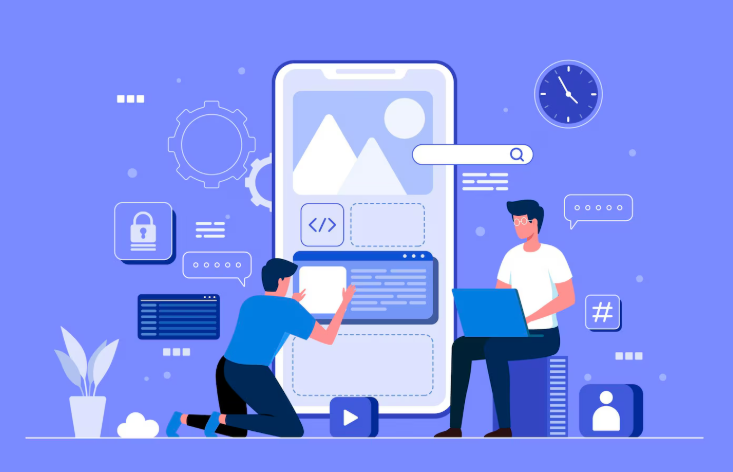
Selecting the Best Development Framework and Technologies
Choosing the right framework significantly impacts your AI web app’s performance and scalability. For backend development, consider Node.js with its robust ecosystem and excellent support for asynchronous operations, crucial for handling AI model interactions. Alternatively, Python, paired with frameworks like Flask or Django, offers a wealth of AI-specific libraries like TensorFlow and PyTorch, simplifying integration. The choice depends on your team’s expertise and project needs. “Prioritize frameworks that offer seamless integration with your chosen AI models and cloud services.”
Frontend frameworks like React, Vue.js, or Angular provide excellent tools for building interactive and user-friendly interfaces. Their component-based architecture is ideal for managing complex UIs, which is common in AI applications. When selecting your technologies, consider factors like community support, available resources, and long-term maintenance. Remember to prioritize security, implementing robust authentication and authorization mechanisms from the outset to protect user data and prevent unauthorized access. This is particularly important when dealing with sensitive information processed by your AI.
Integrating AI APIs and SDKs
Leveraging pre-built AI APIs and SDKs is the most efficient route for integrating intelligent features into your web application. Services like Google Cloud AI Platform, Amazon SageMaker, and Microsoft Azure Cognitive Services offer a wide array of readily available tools. These range from natural language processing (NLP) for chatbots and sentiment analysis to computer vision for image recognition and object detection. Careful selection based on your specific needs is crucial; consider factors like cost, ease of integration, and the API’s performance capabilities. “Choosing the right API can significantly impact both development time and the overall quality of your AI-powered web application.”
Remember to thoroughly examine the API documentation. Understand its limitations and potential biases. Many APIs provide usage examples and tutorials to streamline the integration process. Proper authentication and authorization are paramount for securing your application and protecting user data. For example, using robust methods like OAuth 2.0 is essential. Finally, don’t forget to monitor API performance and costs, regularly reviewing your usage and adjusting your strategy as needed. “Proactive monitoring prevents unexpected spikes in costs and maintains a seamless user experience.”
Developing the Front-End and Back-End Components
Crafting a user-friendly front-end is crucial for a successful AI-powered web application. Consider using modern JavaScript frameworks like React, Vue, or Angular for building dynamic and interactive interfaces. These frameworks offer component-based architecture, simplifying development and maintenance. Remember to prioritize intuitive user experience (UX) design; a poorly designed interface, no matter how powerful the AI backend, will hinder adoption. “Prioritizing accessibility features from the outset is paramount for a truly inclusive application.” For instance, using ARIA attributes for screen readers ensures usability for visually impaired users.
The back-end is where your AI magic happens. Choose a robust framework like Node.js, Python (with frameworks like Django or Flask), or Go, depending on your AI model’s requirements and your team’s expertise. Integrate your chosen AI model (whether a pre-trained model or a custom one) seamlessly with your back-end infrastructure. This might involve using cloud-based AI services like Google Cloud AI Platform or AWS SageMaker to simplify deployment and scaling. “Careful consideration of data security and privacy is vital, particularly when dealing with sensitive user information processed by your AI.” Employ best practices to protect user data throughout the entire application lifecycle.
Testing and Deploying Your AI Web Application
Implementing Rigorous Testing Procedures
Thorough testing is crucial before deploying your AI web application. This isn’t just about ensuring functionality; it’s about validating the accuracy and reliability of your AI model’s predictions within the web application context. Consider using a combination of unit tests, integration tests, and end-to-end tests. Unit tests verify individual components, while integration tests check how these components work together. End-to-end tests simulate real user scenarios, evaluating the complete application flow. Remember to test edge cases and handle potential errors gracefully. Tools like Selenium and Cypress can automate much of this process, significantly improving efficiency and coverage.
“Rigorous testing also involves evaluating the ethical implications of your AI.” Bias detection is paramount; analyze your model’s outputs for potential biases, ensuring fair and equitable outcomes for all users. Regular performance testing is also essential, identifying bottlenecks and areas for optimization. This iterative testing process, combined with continuous monitoring post-deployment, is vital for maintaining a high-quality, reliable, and ethical AI web application. Platforms like Google Cloud’s AI Platform and Amazon SageMaker offer powerful tools for managing and monitoring model performance in production.
Choosing the Right Cloud Platform for Deployment
Selecting the right cloud provider is crucial for your AI web app’s success. Consider factors like scalability, cost-effectiveness, and the specific AI services offered. AWS, for example, boasts robust AI/ML services like SageMaker, making it ideal for complex models. Google Cloud Platform (GCP) offers strong BigQuery integration, beneficial for data-heavy applications. Microsoft Azure excels in its integration with other Microsoft products, a significant advantage if your tech stack leans that way. Your choice depends heavily on your project’s needs and existing infrastructure.
“The best cloud platform isn’t a one-size-fits-all solution.” Carefully evaluate your application’s requirements – processing power, storage needs, and the level of AI integration – before committing to a provider. Factors such as pricing models (pay-as-you-go vs. reserved instances), geographic location for optimal latency, and the availability of specialized hardware (like GPUs for intensive training) must be considered. Thorough research and potentially testing different platforms in a smaller-scale deployment are essential steps to ensure a smooth and efficient launch of your AI web application.
Optimizing Your Application for Performance and Scalability
Performance and scalability are critical for any successful web application, especially those incorporating AI. Ignoring these aspects can lead to slow response times, poor user experience, and ultimately, application failure. Load testing, using tools like JMeter or k6, is crucial to identify bottlenecks and ensure your application can handle anticipated traffic. Consider using cloud-based infrastructure like AWS or Google Cloud for easy scaling; their services allow you to effortlessly adjust resources based on demand. Remember to monitor key metrics such as response times, error rates, and resource utilization throughout the testing process.
Optimizing database queries and implementing caching mechanisms are vital steps. Database optimization techniques, such as indexing and query tuning, can significantly reduce processing times. Employing caching strategies, like Redis or Memcached, stores frequently accessed data in memory, resulting in dramatically faster retrieval. Furthermore, choosing the right AI model is critical. Overly complex models might offer marginal improvements in accuracy but significantly increase processing demands. “Striking a balance between model accuracy and performance is key to a smooth, responsive AI web application.” Regularly review and refine your optimization strategies based on ongoing monitoring and user feedback.
Monetizing Your AI Web Application
Exploring Different Monetization Strategies (Freemium, Subscription, etc.)
Choosing the right monetization model is crucial for your AI web application’s success. A freemium model, offering basic features for free and charging for premium access, is a popular choice. This allows you to attract a large user base while generating revenue from a paying subset. Consider the example of Grammarly, which offers a free version with limited features and a paid subscription for advanced functionalities. This strategy is effective for building brand awareness and user loyalty.
Alternatively, a subscription model provides recurring revenue. This is ideal if your AI application offers ongoing value, such as personalized insights or continuous updates. Think of popular AI-powered writing tools that offer monthly or annual subscriptions for unlimited use. Subscription models require a strong value proposition; users must perceive significant ongoing benefit to justify the recurring cost. “Carefully weigh the pros and cons of each approach, considering your target audience and the features your AI application offers to determine the best fit for your project.”
Building a Sustainable Business Model
Creating a sustainable business model for your AI web application requires careful planning and execution. Consider different revenue streams beyond simple subscriptions. Explore options like freemium models, offering basic features for free while charging for premium access. API access to your AI capabilities could be another lucrative revenue generator, allowing other businesses to integrate your technology into their platforms. Remember to analyze your target market and their willingness to pay for your specific AI-powered features. Examples of successful models include Jasper.ai for writing assistance and Descript for audio and video editing, both using subscription-based models with tiered pricing.
“A robust business model needs to anticipate future growth and scalability.” This means designing your application with future monetization strategies in mind, not just your initial launch. Think about potential partnerships with complementary businesses. Strategic alliances can expand your reach and generate new revenue streams. Constantly monitor market trends and user feedback to adapt and refine your model. Data licensing could also be a profitable avenue, particularly if your application generates valuable datasets. Regularly evaluate your pricing strategy to ensure it balances profitability with market competitiveness. “Consistent adaptation is key to long-term success.”
Marketing and Promoting Your AI Web App
Effective marketing is crucial for your AI web application’s success. Start with a strong online presence. This includes a well-designed website showcasing your app’s features and benefits. Utilize search engine optimization (SEO) techniques to improve your ranking in search results. Leverage social media marketing across platforms like Twitter, LinkedIn, and potentially TikTok, depending on your target audience. Consider targeted advertising campaigns on these platforms, reaching users interested in AI or your specific niche. Remember, clear and concise messaging is key. Highlight the unique value proposition of your AI-powered solution.
Beyond online channels, explore content marketing. Create blog posts, tutorials, and case studies demonstrating your app’s capabilities and value. Collaborate with influencers or industry experts for reviews or endorsements. Consider attending relevant conferences and tech events to network and showcase your AI web application. “Building relationships with potential clients and partners is just as important as advertising.” Participation in relevant online communities can also provide valuable feedback and generate interest. Remember to track your marketing efforts diligently to optimize your strategy for maximum impact.
Future Trends in AI Web App Development
The Role of Generative AI in Web Application Development
Generative AI is rapidly transforming how we build web applications. Tools like DALL-E 2 and Stable Diffusion are already enabling developers to generate unique images and artwork directly within their applications, enhancing user experience and personalization. This significantly reduces the reliance on pre-made assets or expensive graphic designers. Furthermore, generative AI models excel at creating realistic and diverse content, such as automatically generating product descriptions or personalized marketing copy, increasing efficiency and scaling content creation efforts.
Beyond image generation, large language models (LLMs) like GPT-4 are revolutionizing the creation of dynamic and interactive web applications. LLMs can power sophisticated chatbots that offer seamless customer support or even generate code snippets, assisting developers in speeding up the development process. For example, GitHub Copilot leverages AI to suggest code completions in real-time, increasing developer productivity. “This integration of generative AI is not just about adding cool features; it’s about fundamentally changing the way we design, build, and deploy web applications, opening doors to levels of automation and personalization previously unimaginable.” The use of these powerful tools is expected to become even more prevalent in 2024 and beyond.
Ethical Considerations and Responsible AI Practices
Developing AI-powered web applications requires careful consideration of ethical implications. Bias in training data can lead to discriminatory outcomes. For example, facial recognition systems trained on predominantly white faces often perform poorly on individuals with darker skin tones. This highlights the crucial need for diverse and representative datasets to mitigate such biases. Furthermore, transparency and explainability are paramount. Users should understand how AI systems make decisions, particularly when those decisions have significant consequences. OpenAI’s efforts toward explainable AI (XAI) represent a step in the right direction, but much work remains.
Responsible AI practices go beyond simply avoiding bias. We must also consider data privacy and security. Robust data protection measures are essential, especially when dealing with sensitive user information. Regulations like GDPR in Europe and CCPA in California mandate specific data handling procedures. Ignoring these regulations can result in significant legal and reputational damage. “Building ethical AI is not just a technical challenge; it’s a moral imperative requiring continuous monitoring and improvement.” Companies must actively engage in ongoing ethical reviews and audits to ensure their AI web applications align with societal values and legal frameworks.
The Future of AI Web App Development and its Impact on Businesses
AI-powered web applications are rapidly transforming how businesses operate. We’re seeing a surge in personalized user experiences, driven by sophisticated machine learning algorithms that analyze user behavior and preferences. This leads to increased customer engagement and loyalty, directly impacting the bottom line. Companies like Netflix and Spotify already leverage AI extensively for recommendation engines, demonstrating the significant return on investment (ROI) possible.
The future will see even more seamless integration of AI into various business functions. This includes automation of repetitive tasks, leading to increased efficiency and reduced operational costs. Furthermore, predictive analytics powered by AI will enable businesses to make data-driven decisions with greater accuracy. “AI-driven web apps are no longer a luxury; they are becoming a necessity for businesses looking to remain competitive in today’s rapidly evolving digital landscape.” Expect to see a continued rise in the adoption of AI-powered chatbots, improving customer service and streamlining communication.



